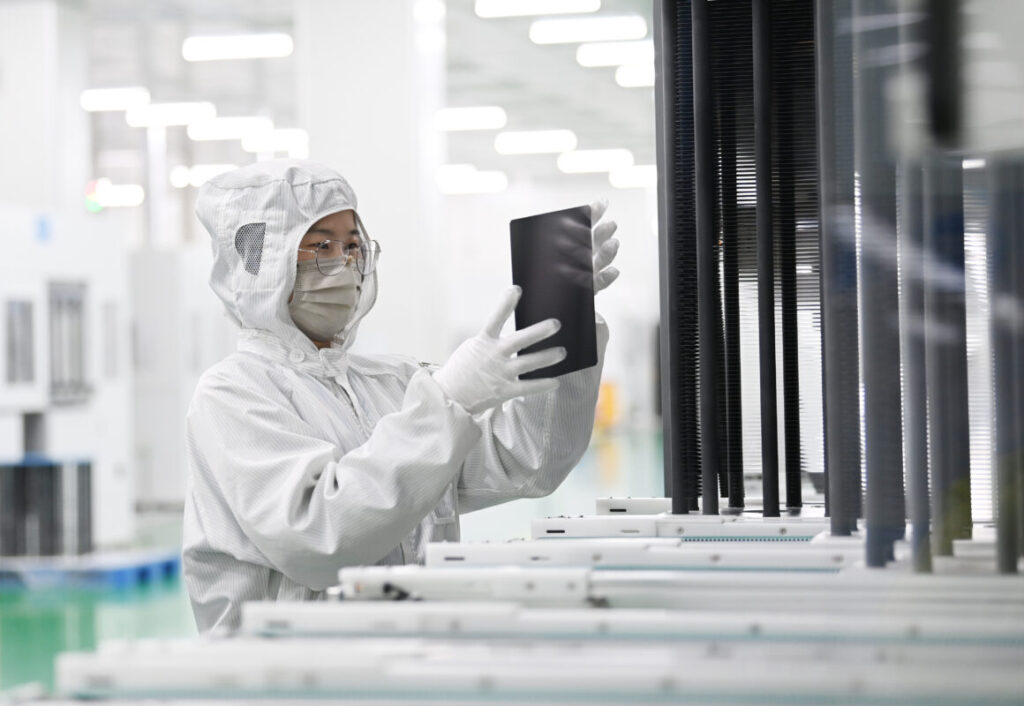
PERC solar PV technology is “all but obsolete” in Europe, as the flow of cheap N-type products coming from China is unlikely to abate.
According to energy market analyst Clean Energy Associates (CEA), N-type tunnel oxide passivated contact (TOPCon), heterojunction technology (HJT) and back contact (BC) module technologies have almost entirely replaced the long-standing PERC technology in “many international markets.”
Try Premium for just $1
- Full premium access for the first month at only $1
- Converts to an annual rate after 30 days unless cancelled
- Cancel anytime during the trial period
Premium Benefits
- Expert industry analysis and interviews
- Digital access to PV Tech Power journal
- Exclusive event discounts
Or get the full Premium subscription right away
Or continue reading this article for free
This is due to the abundance of N-type manufacturing capacity in China, which has pushed down their price, as much as the products’ increased energy efficiency and production over PERC.
CEA’s associate director of market intelligence, Joseph Johnson, said: “For these global markets, such as Europe, the project savings from more efficient and powerful PV products have been fully passed on to developers, given the magnitude of N-type manufacturing available in China.
“Consequently, project costs with N-type products are now the baseline; hence, PERC is all but obsolete.”
PERC has been the dominant technology in the solar PV sector over recent decades. However, in the last two years, major Chinese manufacturers like JinkoSolar, Canadian Solar, JA Solar and LONGi have overwhelmingly shifted their production towards N-type TOPCon technology, which offers greater power output and light-to-energy conversion efficiency. This is despite growing “deep concern” over the reliability of some TOPCon technology, as expressed by a number of academics writing for PV Tech Premium.
But the shift away from PERC is slower in the US, CEA’s report said, because of its trade barriers with China.
Ongoing tariffs on Chinese solar products entering the US, as well as antidumping and countervailing duty (AD/CVD) investigations on solar modules and cells produced predominantly by Chinese companies in Southeast Asia; and the Uyghur Forced Labor Prevention Act (UFLPA) which requires proof that certain products (including solar) are not exposed to the risk of forced labour in China; have meant that the US market is largely insulated from Chinese PV supply.
He said the US market is “gradually shifting towards a higher n-type share in overall project deployment mixes”, but that lack of trade with China and, moreover, “Constraints on available N-type manufacturing outside of China are likely to delay the full obsolescence of PERC for another few years” in the US.
Sustained low prices
The shift to N-type solar modules has been accelerated by the drop in technology costs over recent years. This is primarily because Chinese companies have overinvested in PV manufacturing capacity with the result that 1.8TW of global module production capacity is forecast by the end of this year – nearly three times the entire global deployment demand.
CEA’s report, which can be read here, says that 161GW of solar cell and 56GW of module production capacity have been suspended because of the overcapacity and price situation. Moreover, 187GW of cell and 43GW of module capacity have been terminated, along with 100,000 tonnes of polysilicon production capacity. CEA said: “Most entrant suppliers chose to cancel, transfer and sell assets they invested in during the solar industry’s peak pricing period, given the cash squeeze and investors’ unwillingness to fund additional losses.”
Indeed, all of the leading Chinese solar manufacturers have seen profits and revenues fall dramatically, even as their total shipments of products have almost uniformly increased. The market leader, JinkoSolar, saw its income fall by 98.78% over 2024.
China’s Ministry of Industry and Information Technology (MIIT) has attempted to curb capacity expansions and introduced more stringent rules for solar PV bids. Despite these efforts to halt the price slide and impose more balance between supply and demand, CEA’s report forecasts that this will have little effect on global solar module prices.
Johnson said that while they may cool new capacity expansions in the future, the measures in place so far are “insufficient” to curb the overcapacity already present in the Chinese industry.
A “sharp market correction” on price is unlikely, he said; “instead, a gradual recovery in pricing is anticipated.”
This accords with a statement issued by the heads of Canadian Solar and LONGi in a rare joint public address last month (premium access). Li Zhenguo, founder and president of LONGi Green Energy, said he was “not optimistic” about a broad industry recovery in the short-term, despite a slight price rise in the first quarter of 2025.






